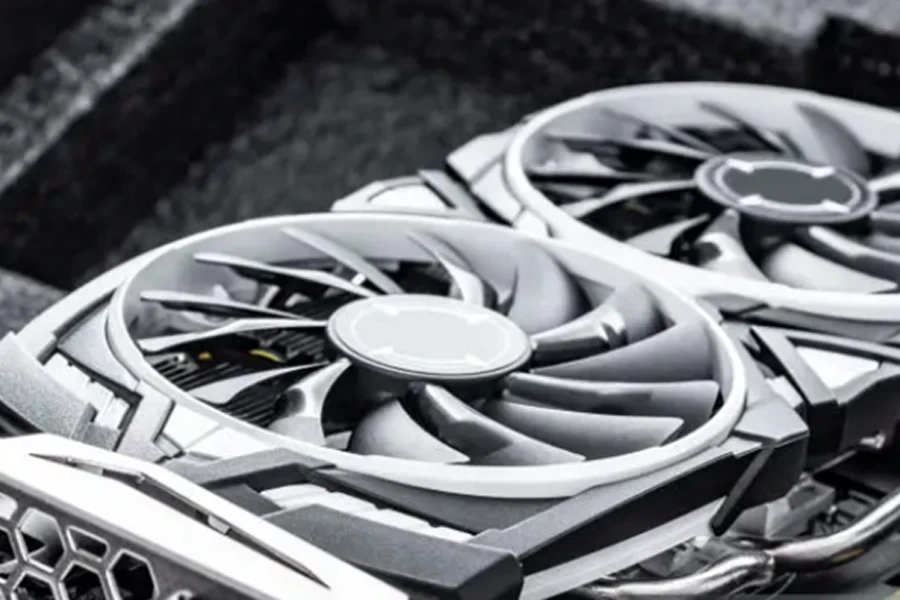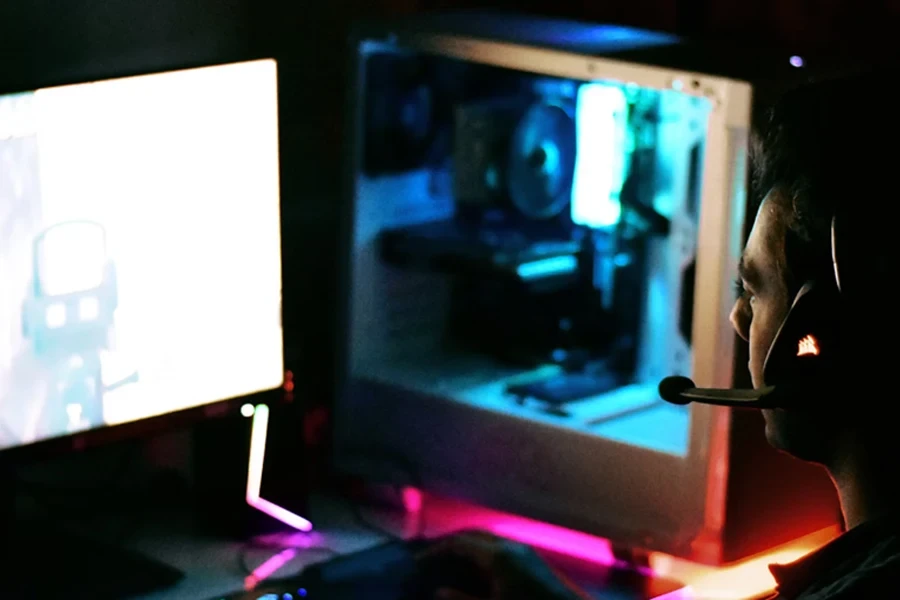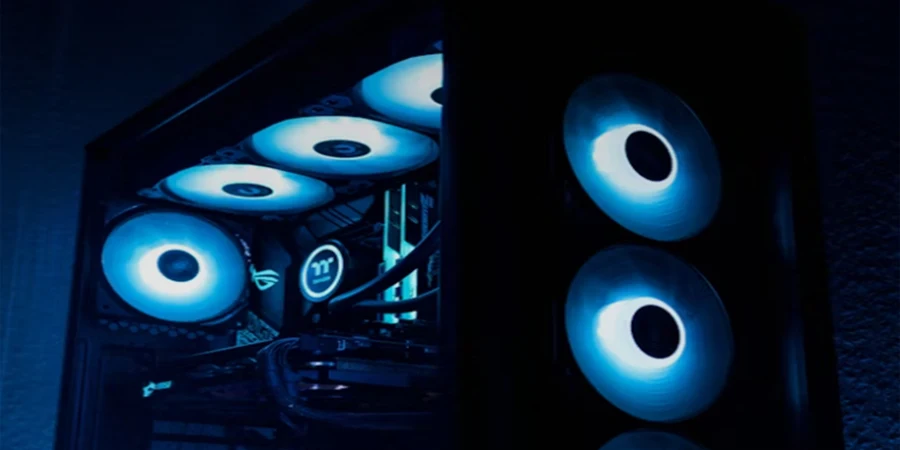Table of Contents
● Introduction
● Market overview
● Types of graphics cards
● How to choose the right graphics card
● Conclusion
Introduction
The significance of graphics cards continues to grow, transcending beyond mere gaming into realms of professional content creation and complex computational tasks. These cards are now pivotal in enhancing the performance and visual quality of applications ranging from immersive video games to demanding graphic design software and AI-driven applications. The rapid evolution of GPU technology has led to more efficient, powerful, and energy-saving models that cater to a variety of professional and consumer needs. As graphics cards become more integral to technological advancement and everyday computing, understanding their capabilities and choosing the right one has never been more essential.

Market overview
The graphics card market witnessed significant technological advancements, particularly in the development of more efficient architectures and enhanced graphical fidelity, aligned with improving power efficiency. These improvements are crucial as manufacturers respond to increased consumer sensitivity toward energy costs and environmental impacts. According to Digital Trends, the latest graphics processing units (GPUs) showcase an improvement in energy efficiency by approximately 25%, while also delivering up to a 35% increase in graphical output compared to the previous generation. This evolution caters to the escalating demand for high-resolution, immersive experiences in applications such as gaming and virtual reality, underscoring the industry’s commitment to pushing the limits of graphics processing technology.
On the consumer demand front, the market remains dynamic, with distinct needs across different segments. Gamers are particularly influential, driving demand for high-performance graphics cards that support cutting-edge features like real-time ray tracing and AI-driven enhancements such as Deep Learning Super Sampling (DLSS). These features utilize machine learning to significantly boost image quality and performance, with DLSS alone enhancing frame rates by up to 40%, as highlighted by TechRadar. Professional users in fields such as video editing and graphic design prioritize cards that offer precision and can efficiently handle complex rendering tasks. Furthermore, as the integration of AI into GPU technology deepens, there has been a notable increase in GPU capabilities, with new models reporting up to a 50% increase in processing power. According to the TechRadar, industry is also seeing a rise in specialized hardware designed to manage specific tasks like AI computations more effectively, featuring advancements such as a 30% increase in core counts and significant expansions in memory bandwidth, crucial for managing larger datasets and more complex computational demands.
Types of graphics cards
Gaming graphics cards
For gamers, the demands on graphics cards are exceptionally high, necessitating robust solutions that handle intense graphical processing without compromise. These cards are equipped with advanced GDDR6X memory, which provides the necessary bandwidth for high-resolution gaming and complex visual effects. High GPU core counts enable them to manage detailed and dynamic environments seamlessly, ensuring smooth gameplay even under demanding conditions. Additionally, advanced cooling technologies such as liquid cooling systems or multiple fan setups are standard to manage the significant heat generated during prolonged gaming sessions. The incorporation of real-time ray tracing technology further pushes the boundary of realism, allowing for incredible lighting and shadow effects that enhance the immersive experience of modern games.

Professional graphics cards
In the realm of professional content creation, graphics cards are tailored to deliver precision and handle large datasets efficiently. These GPUs are equipped with substantial amounts of VRAM, essential for processing high-resolution images and videos in tasks such as 3D rendering and complex visual effects workflows. Professional cards often feature specialized compute cores that accelerate rendering and AI-driven processes, critical for speeding up production times in professional settings. Error-correcting code (ECC) memory is also prevalent to prevent data corruption, ensuring accuracy and reliability during critical tasks. The balance of power, speed, and precision makes these cards indispensable tools for professionals in graphics-intensive fields.
Streamlined graphics cards
Designed for everyday use, streamlined graphics cards cater to users needing basic visual performance for activities like streaming media, simple photo editing, and office applications. These cards typically utilize energy-efficient architectures and simpler cooling solutions to provide adequate performance for standard computing tasks. Memory configurations such as GDDR6 are common, which while slower than the GDDR6X used in more powerful cards, still provides sufficient throughput for non-intensive applications. These GPUs strike an optimal balance between cost and performance, offering the everyday user a cost-effective solution without the bells and whistles of more advanced graphics cards.
Hybrid graphics cards
Hybrid graphics cards serve users who straddle the needs between high-performance gaming and general computing. These GPUs are versatile, equipped with moderate GPU core counts and GDDR6 memory, capable of supporting casual gaming, video playback, and more demanding graphical tasks than typical office work. They often come with efficient cooling solutions that remain quiet under load, making them ideal for home office environments where noise levels are a concern. Hybrid cards represent a middle ground, offering better performance than streamlined models without the high price tag of top-tier gaming or professional GPUs.
Specialized graphics cards
Apart from mainstream categories, the market also sees specialized graphics cards designed for niche applications. These include GPUs optimized for tasks like crypto currency mining and compact models intended for small form factor PCs where space is at a premium. These specialized cards may feature adaptations like reduced power consumption, enhanced connectivity options for multiple displays, or even passive cooling systems to fit unique user requirements. As the needs of users diversify, these specialized graphics cards provide tailored solutions that support specific applications beyond traditional gaming and content creation scenarios.

Choosing the right graphics card
Application-based performance
When selecting a graphics card, assessing the performance needs based on the intended application is critical. For gamers, the graphics card must handle intensive graphics processing, which includes support for real-time ray tracing and AI-driven enhancements like DLSS (Deep Learning Super Sampling). These technologies significantly enhance the visual quality and responsiveness of games, allowing for more realistic and immersive gaming experiences. According to TechRadar, graphics cards equipped with these capabilities not only provide superior image quality but also maintain higher frame rates, essential for a smooth gaming experience. This makes such features indispensable for modern gaming setups, especially for those who play graphically demanding games.
Ensuring system compatibility
Compatibility with existing systems is a cornerstone in selecting the right graphics card. It is essential that the graphics card is compatible with the motherboard’s interface—typically PCIe—and fits within the physical dimensions of the user’s computer case. Moreover, the power supply must have sufficient capacity to support the card’s power requirements; a mismatch here can lead to system instability or even hardware failure. Users need to evaluate their current system setup to ensure that it can support the new hardware without requiring significant modifications or upgrades, ensuring a seamless integration of the new GPU into their existing system.
Leveraging technological advancements
The impact of technological advancements such as ray tracing and AI-driven enhancements on graphics cards cannot be overstated. Ray tracing technology enhances real-time lighting and shadows, making virtual environments more lifelike, a feature that has become increasingly common in high-end gaming graphics cards. AI enhancements like DLSS improve not only frame rates but also image resolution without compromising performance. These advanced features, once exclusive to the most expensive models, are now more accessible and are setting new standards for what users expect from their hardware, according to Digital Trends. Such advancements are crucial for users who need their systems to handle the latest software and games, which are continually increasing in complexity.
Evaluating specifications over price
Evaluating a graphics card based on its specifications rather than its price ensures that it fits the user’s long-term needs. Important factors to consider include the number of GPU cores, the type and amount of memory (e.g., GDDR6 vs. GDDR6X), and the support for the latest technological enhancements. A professional video editor, for instance, might prioritize a graphics card with a large amount of VRAM and support for ECC memory to handle complex video processing tasks efficiently. This approach helps users avoid paying for unneeded features while ensuring that the GPU can handle their specific, performance-intensive tasks.
Planning for future requirements
Choosing the right graphics card involves balancing between current technological needs and anticipation of future trends. As the landscape of graphics technologies continues to evolve, investing in a graphics card that embraces the latest advancements can offer better long-term value by extending the hardware’s useful life. This strategic approach not only satisfies immediate performance requirements but also prepares the system for future software and games, which are likely to have more stringent hardware requirements. By planning for future needs, users can maximize their investment in a new graphics card, ensuring it remains capable and relevant in the face of rapidly advancing technology.
Conclusion
The graphics card market presents a diverse array of products tailored to meet specific commercial needs, from high-performance options suitable for gaming and media creation to more energy-efficient models for standard business computing. Distinctive features such as advanced GPU cores, cutting-edge memory types, and robust cooling solutions are strategically designed to optimize each card’s performance for targeted professional environments. With technological advancements like enhanced ray tracing and AI-driven features shaping the landscape, these graphics cards are set to significantly boost productivity and performance capabilities across various industries. For businesses looking to invest in new hardware, choosing a graphics card that aligns with current and anticipated needs is crucial. This ensures that the investment not only meets immediate operational demands but also positions the business advantageously for future technological shifts, enhancing long-term returns and sustaining competitive edge.




